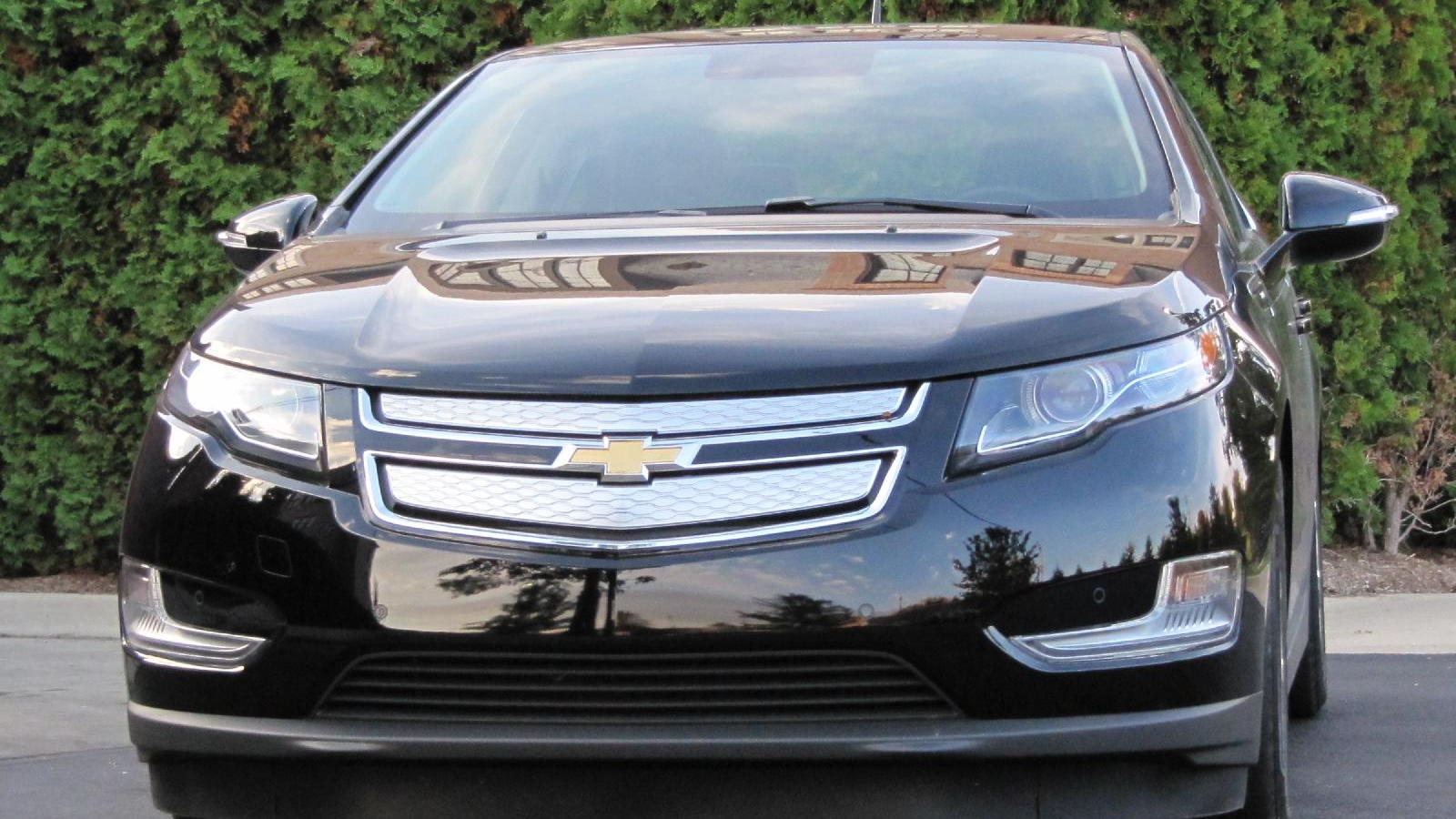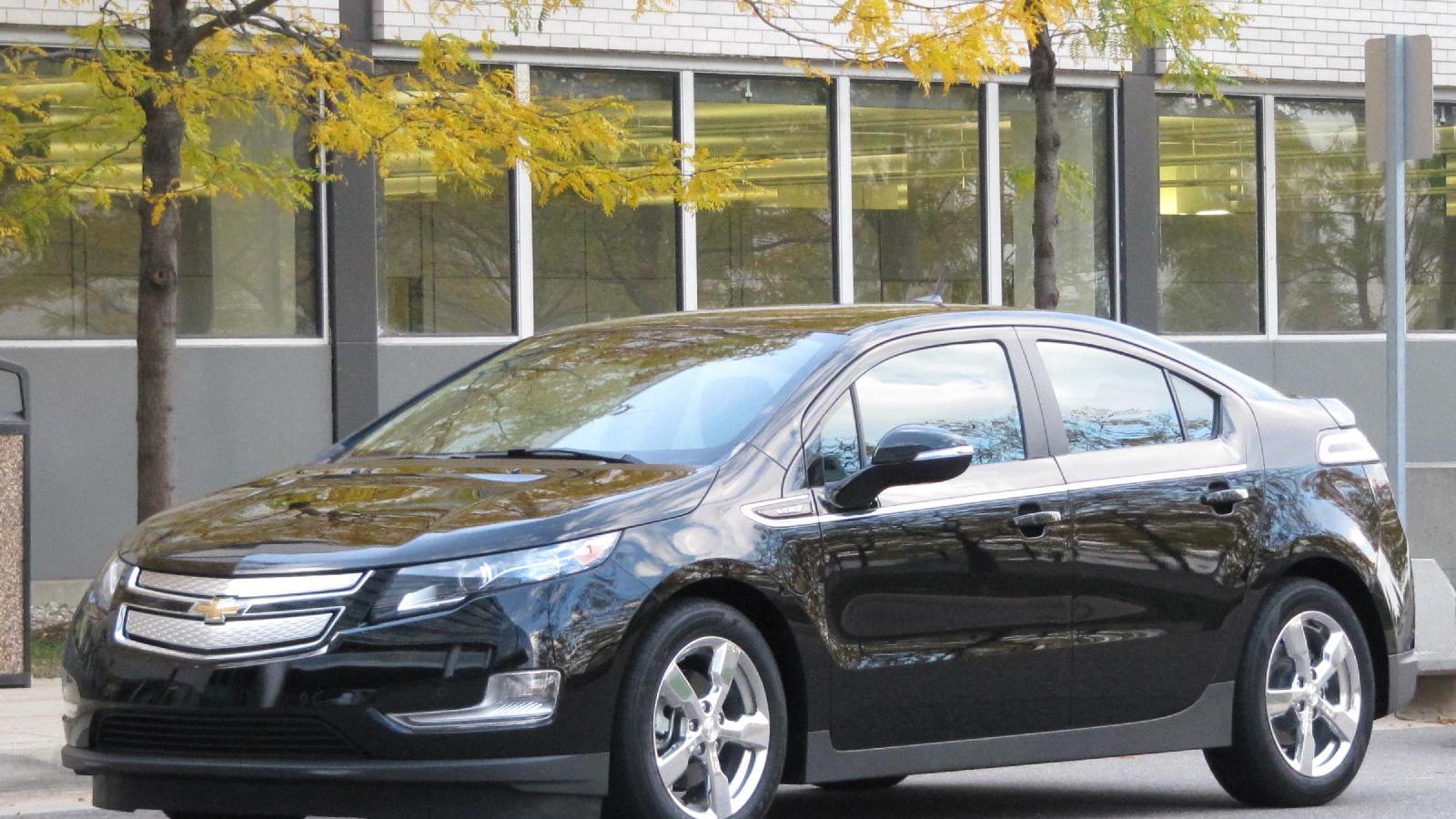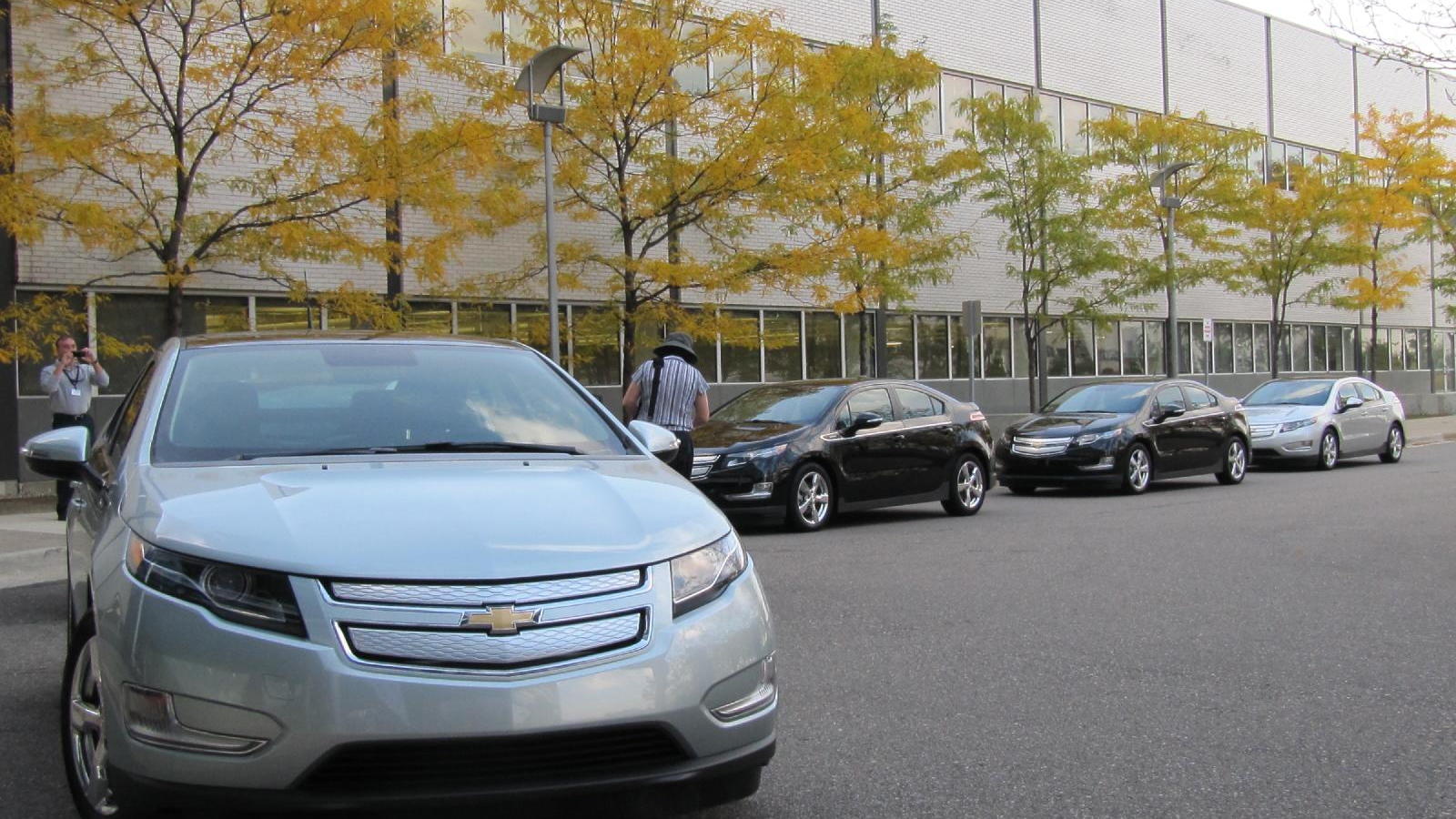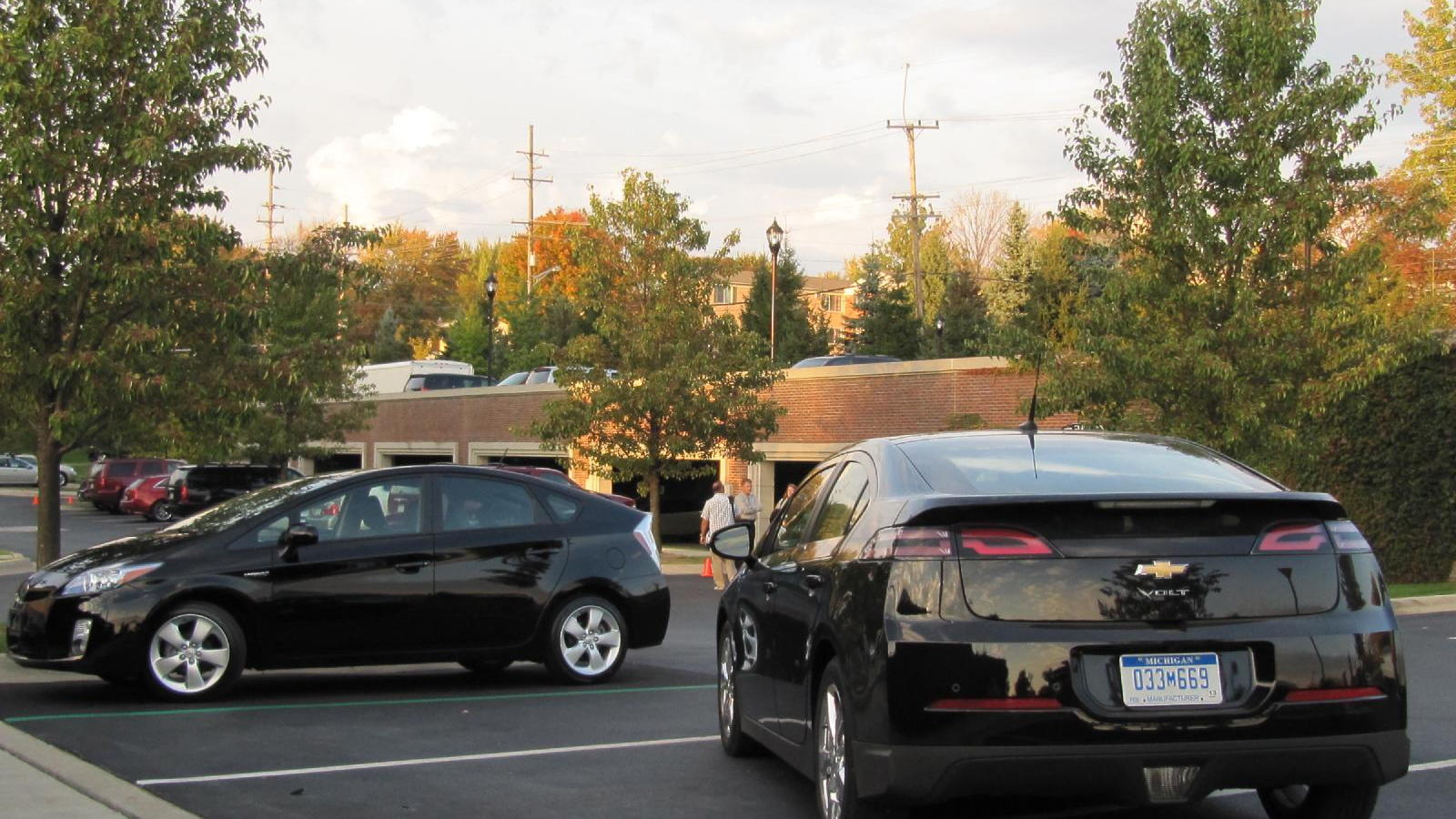Finally, after almost four years, we've driven the 2011 Chevrolet Volt in a variety of conditions, talked over our impressions, and reached a conclusion: Yes, the 2011 Volt electric car is a real car.
It may be propelled by electricity. It may plug into a wall socket or a special garage recharger to "refuel." But the new and remarkable compact hatchback also rides and drives quietly, seats four comfortably, and performs briskly.
The fact that it also has a revolutionary powertrain that operates as an electric car or a plug-in hybrid--and is the first Chevrolet you can plug into a wall to recharge--could almost be an afterthought. It's that well executed.
The sole fly in the ointment is the inevitably high early adopter price: $41,000. New auto technology always costs a lot when it first hits the market, and the Volt's lithium-ion battery pack all by itself likely costs half the price of a new 2011 Chevy Cruze subcompact.
[For a complete list of Volt coverage, see our Ultimate Guide to the 2011 Chevrolet Volt.]

2011 Chevrolet Volt test drive, Michigan, October 2010
Regular car, less than remarkable looks
We've said it before, but we wish the 2011 Volt were slightly more distinctive. Up close, it's clear that it's a Chevy of a different kind, from the blanked-out simulated twin-bar grille to the high, almost horizontal tailgate with a vertical glass panel for visibility.
But in profile, we feel the shape just isn't as individual as the cars that compare most closely to the Volt, the 2010 Toyota Prius hybrid and the 2011 Nissan Leaf electric car.
Like the Volt, each is a five-door hatchback with a low drag coefficient. And is instantly identifiable at 100 paces. We're not sure the Volt is that distinctive.
Chevy even provided a black Prius to compare to our own black Volt. On reflection, that may not have been wise, since we preferred the crisp, taut lines of the Prius to the Volt's mix of slab-sided and softer contours.
It's not that the Volt is bad-looking--and it certainly got its share of stares on the road. We just wish it weren't quite so slit-windowed and heavy below the beltline.
Interior success
Inside, the news is better. The Volt's cabin blends the traditional Chevy twin-cockpit appearance with some new touches, including a vehicle information display screen that's head and shoulders above any other Chevy we've driven.
A shiny white plastic finish for the console remains an option, one we fear may date quickly. Our car's console came in a handsome glossy charcoal, which also avoided the soon-to-be-cliche shiny piano black motif.
The Volt's seats are comfortable, with optional leather seating surfaces and some remarkable accent colors. One model we drove had lime green piping and green abstract-patterned plastic door trims, both of which worked far better than we could have guessed.
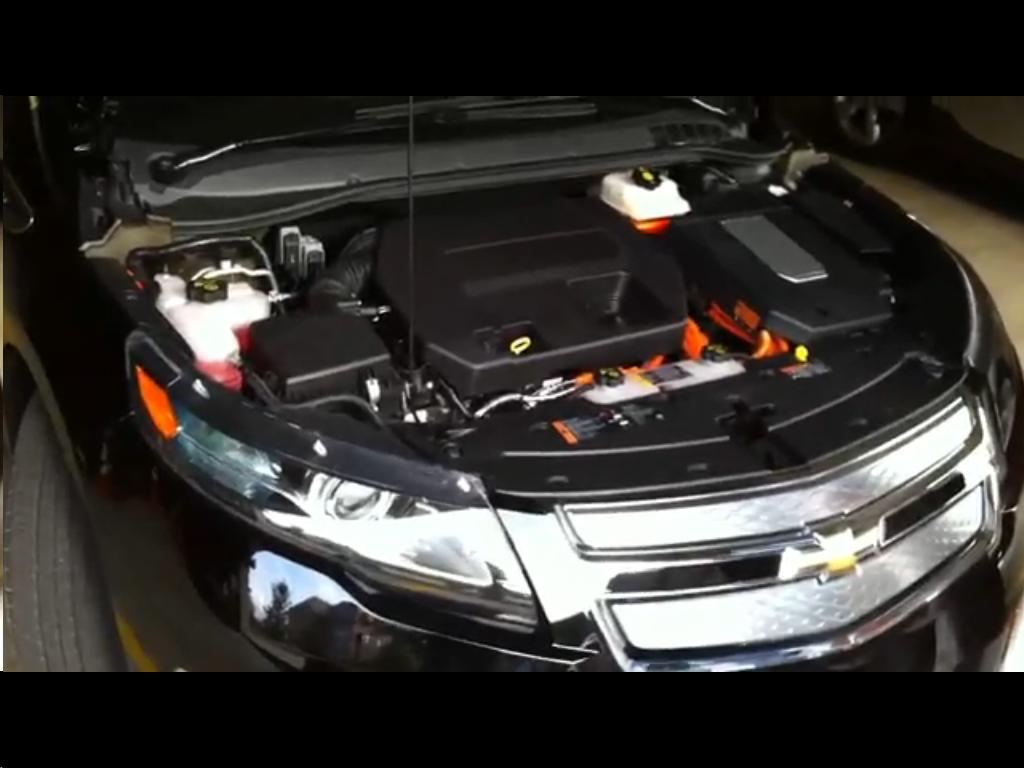
2011 Chevrolet Volt with hood open, showing range extender engine and Voltec drive
Crisp, quiet, and smooth
So what's the 2011 Volt like in mixed usage--which is to say, driving on electricity from both the 16-kilowatt-hour battery pack and that provided to the 111-kilowatt motor from the 80-horsepower 1.4-liter gasoline engine powering a 55-kW generator?
Remarkably like a regular car, only better.
And that's not just us speaking. Pretty much every reviewer has concluded that Chevrolet has built a remarkable car with a ground-breaking powertrain that it almost seems they've gone to great lengths to disguise.
Standard accelerator response
They've even tuned the accelerator to behave just like a standard car with an automatic-transmission. If you want to enjoy single-pedal driving, more like the Tesla Roadster, you have to put the car into a special "Low" mode.
In a way, that's a shame. We're all for predictability and not scaring consumers who may be daunted by the idea of new technology. But we wonder a bit whether Chevy may have erred on the side of conservatism.
Will that hurt sales of the 2011 Chevrolet Volt? Not in the slightest. It's a very good four-seat compact car, and its $41,000 price won't daunt the early adopters who will snap up the limited production: 10,000 in 2011, 45,000 the following year (or perhaps more).

2011 Chevrolet Volt test drive, Michigan, October 2010
Acceleration, sure, what about range?
We knew from our earlier test of a pre-production Volt that acceleration from a stop was brisk. We were reassured to see we were still able to spin an inside front wheel when accelerating hard out of a turn.
The Volt accelerates from 0 to 60 mph in roughly 9 seconds, with its punchiest performance from 0 to 40. Top speed is limited to 100 miles per hour.
But it's the energy consumption (not just fuel efficiency!) that everyone wants to know about. Chevrolet quotes an electric range of 25 to 50 miles for the car, and we were able to drive the 2011Volt 43 miles on electricity.
Various journalists testing the Volt along the same course achieved electric ranges that varied from 36.9 to 57.8 miles. The route stayed off Interstate highways and contained no sections with speed limits over 45 mph.
40 mpg or 74 mpg?
Over a day that covered 160 miles of driving, with a recharging stop at the Detroit-Hamtrack factory where the car had been assembled, we covered 73.0 miles on electricity and 86.8 miles on gasoline.
We used 2.15 gallons of gas during that period, meaning 40.3 miles per gallon while the engine was running, and an overall average of 73.9 mpg.
Needless to say, both electric range and "mileage" vary with driving style, speed, temperature, route, and accessory use.
We note that the one test we didn't conduct was to hammer the Volt along freeways at 80 mph for several hours. We're sure the car was capable of it, we just can't project the effective "mileage" in that duty cycle.
Refined cruising
Put your mother in the 2011 Chevrolet Volt and--except for the neat humming tone as the car boots up and the lack of engine noise--she might never know it had anything different under the hood.
The interior was well put together, without a single rattle or squeak, and body quality and interior trim appeared to be good on the pre-production but saleable vehicles we drove.
In our more than 200 miles of Volt driving over two days, we came to appreciate the car's quiet cabin, surprisingly stable handling, and simple, high-quality graphic displays.
Electric cars pose an interesting new challenge to automotive engineers. Minus the noises of a piston engine and its transmission, other sounds—tire roar, wind whistle, even ventilation fans—appear much louder.
The Volt engineers have done a remarkable job in rising to this challenge. Despite their low rolling resistance, tire noise is tolerable (and sometimes the loudest thing you'll hear).
Painful air pulsing
We found relatively few nits to pick. The single most surprising thing during our day-long drive, in fact, was the loud, almost painful, machine-gun drumming sounds as air pulsed into the car through a single open rear window.
It's a sign of the Volt's extremely aerodynamic shape--GM quotes a drag coefficient of 0.28--that opening one rear window disturbs airflow over the body to that extent. But it was unpleasant enough that we jumped to open a front window to end the pulsing.
When the 1.4-liter combustion engine switched on—imperceptibly to the driver but, oddly, just barely noticeable to the front passenger—performance didn't change.
As the car accelerates and brakes, the varying power demands are buffered by the battery pack, so the engine can run at a reduced range of speeds, making it quieter. Only occasionally, under high power demand, did the engine rev up and make itself noticeable.
Four seats, eight airbags
With new and more stringent testing on the horizon, the 2011 Volt has been designed for high safety ratings. Neither the National Highway Traffic Safety Administration (NHTSA) nor the Insurance Institute for Highway Safety (IIHS) has yet crash-tested the Volt.
But GM engineers stress that they subjected the Volt to every bit as many accident simulations and real crash tests as any other new car.
And they paid special attention to the large T-shaped battery pack that spans below the rear seats and stretches forward through the tunnel, with strengthening beams to transfer crash loads through it to ensure it would not rupture even in severe accidents.
The Volt is fitted with eight airbags for its four passengers: Front-seat occupants have front and side bags, plus knee bolsters, while side air curtains stretch the length of the front and rear doors to protect rear-seat riders as well.
Traction control, anti-lock brakes, and other electronic control systems keep the car well behaved. Every Volt is fitted as standard with GM's Onstar telecommunications system, including five years of service.
Long equipment list, few options offered
The Volt doesn't have a lengthy list of options; for its price of $41,000, it includes a long list of standard equipment that the 2011 Cruze compact doesn't. It can also be leased for three years/36,000 miles for $350 per month, with $2,500 down.
The price includes a tilting and telescoping steering wheel, a feature we're particularly grateful for. We spent a couple of minutes adjusting seat, mirror, and steering wheel heights to achieve the best possible view through the limited rear window opening. The wheel could even extend a little further back than it does now, but that's a very small nit.
The standard stereo includes AM, FM, DVD-ROM, and MP3 playback, voice recognition, Bluetooth connection, and pause-and-play capabilities. A 60-GB hard drive is standard, 30 GB of which can be used for personal music storage.
XM Satellite Radio with traffic and weather information is also standard, and the premium Bose audio system is designed to save electric energy while powering its six speakers.
The premium trim package runs $1,395, the rear camera and park assist option is $695, and polished aluminum wheels are $595. Beyond those three features, the only other options are in paint color.
The Volt is offered in six colors, including silver, black, and grey, along with Viridian Joule, a pale green, or White Diamond Tricoat as extra-cost options for $995, and Crystal Red Metallic Tintcoat at $495.
The Volt's lithium-ion battery pack is warrantied for 8 years or 100,000 miles, which should reassure owners who choose to buy the car rather than lease it.
Other warranties include bumper-to-bumper coverage for 3 years/36,000 miles; roadside assistance for 5 years/100,000 miles; and on the gasoline engine, limited 5-year/100,000-mile coverage as well.
General Motors provided airfare, lodging, and meals to enable High Gear Media to bring you this first-person drive report.
